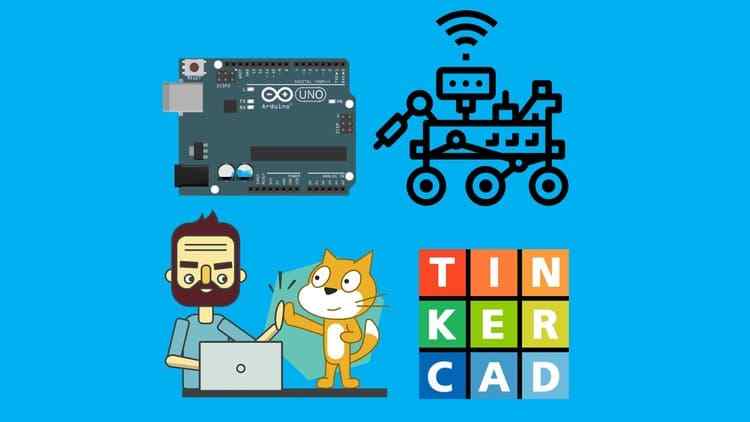



 Tech & IT
Tech & IT
 Business
Business
 Coding & Developer
Coding & Developer
 Finance & Accounting
Finance & Accounting
 Academics
Academics
 Office Applications
Office Applications
 Art & Design
Art & Design
 Marketing
Marketing
 Health & Wellness
Health & Wellness
 Sounds & Music
Sounds & Music
 Lifestyle
Lifestyle
 Photography
Photography
More Learnfly
Business Solution Become an InstructorVirtual Reality (VR) creates immersive computer-generated environments for users, enhancing experiences through specialized hardware like headsets. It's widely used in gaming, simulation, and diverse industries for realistic, interactive encounters.

By : Ashraf Al Madhoun
Create Your Own Augmented reality (AR) Apps in No Time using Free Tools without Exper...
4.8 235
14 lectures All Level

By : Nour ElAkhdar
Using CoSpaces Edu ...
4.6 1083
13 lectures All Level












Learn more topics in various categories at one place. Explore unlimited courses in other categories and up-skill yourself today.

 Jazeb Akram
Jazeb Akram 4.2 769613 Beginner Level

 John Hedengren
John Hedengren 4.1 568093 All Level

 Ranjan Pandey
Ranjan Pandey 4.1 345824 All Level

 Pieter Vliegenthart
Pieter Vliegenthart 4.6 99976 All Level

 Muhammad Ahsan Pervaiz
Muhammad Ahsan Pervaiz 4.2 99668 All Level

 Jerome P.
Jerome P. 4.8 99427 All Level

 Senol Atac
Senol Atac 4.9 99039 All Level

 Vikas Munjal
Vikas Munjal 4.8 99003 Beginner Level

 Chandramouli Jayendran
Chandramouli Jayendran 4.9 98556 Beginner Level

 Ashraf Al Madhoun
Ashraf Al Madhoun14 Lectures All Level

 Satyendra singh
Satyendra singh17 Lectures All Level

 Nour ElAkhdar
Nour ElAkhdar13 Lectures All Level

 Nour ElAkhdar
Nour ElAkhdar11 Lectures All Level

 Ivan Yosifov
Ivan Yosifov6 Lectures All Level

 Sandeep Saini
Sandeep Saini36 Lectures All Level

 Saheb Singh chaddha
Saheb Singh chaddha14 Lectures All Level

 Handson Courses
Handson Courses64 Lectures All Level

 WebCast Channel
WebCast Channel 6 Lectures All Level

 Jed Hastwell
Jed Hastwell44 Lectures All Level

 Hamza Brinis
Hamza Brinis11 Lectures All Level

 THE MMZ
THE MMZ6 Lectures All Level

 Laurence Svekis
Laurence Svekis17 Lectures All Level

 Sandip Bhattacharya
Sandip Bhattacharya19 Lectures All Level

 Sandip Bhattacharya
Sandip Bhattacharya19 Lectures All Level
Virtual Reality (VR) is a technology that immerses users in a computer-generated environment, simulating a realistic and interactive experience. It typically involves the use of specialized VR headsets to create a three-dimensional, 360-degree environment.
Virtual Reality is utilized across various industries, including gaming, education, healthcare, architecture, training simulations, and entertainment. It offers a unique and immersive way for users to engage with content and environments.
VR headsets are devices worn on the head that contain displays, sensors, and often motion-tracking technology. They work by displaying stereoscopic images to each eye, creating a 3D effect. Motion sensors track the user's head movements, allowing them to interact with the virtual environment.
VR content is created using 3D modeling and animation software, and often involves specialized tools for VR development. Game engines like Unity and Unreal Engine have VR support, enabling developers to build immersive experiences. 360-degree videos and photos are also used for non-interactive VR content.
Room-Scale VR refers to a VR experience where users can move freely within a physical space while being tracked in the virtual environment. This is achieved through external sensors or cameras that track the user's movements, enhancing immersion and interactivity.





